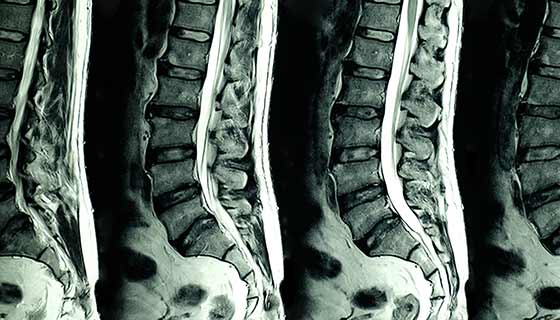Sensory Evoked Potentials Studies
What is a sensory evoked potentials study?
Sensory evoked potentials studies measure electrical activity in the brain
in response to stimulation of sight, sound, or touch. When the brain is
stimulated by sight, sound, or touch, signals travel along the nerves to
the brain. There, electrodes detect the signals and display them for your
doctor to interpret.
Sensory evoked potentials studies involve 3 tests that measure response to
visual, auditory, and electrical stimuli.
- Visual evoked response (VER) test. This test can diagnose problems with the optic nerves that affect sight. A healthcare professional places electrodes along your scalp to record the electrical signals as you watch a checkerboard pattern flash for several minutes on a screen.
- Brainstem auditory evoked response (BAER) test. This test can diagnose hearing ability and can point to possible brainstem tumors or multiple sclerosis. A healthcare professional places electrodes on your scalp and earlobes and delivers auditory stimuli, such as clicking noises and tones, to one ear.
- Somatosensory evoked response (SSER) test. This test can detect problems with the spinal cord that cause numbness of the arms and legs. For this test, a healthcare professional attaches electrodes to your wrist, the back of your knee, or other locations. He or she will apply a mild electrical stimulus through the electrodes. Electrodes on your scalp then determine the amount of time it takes for the current to travel along the nerves to the brain.
Why might I need a sensory evoked potentials study?
Your doctor may order these tests to assess hearing or sight, especially in infants and children. They are also done to diagnose disorders of the optic nerve, and to detect tumors or other problems affecting the brain and spinal cord. They are also used to assess brain function during a coma.
These tests usually do not lead to a specific diagnosis about what is causing the abnormality. However, the evoked potentials test can sometimes confirm a diagnosis of multiple sclerosis.
There may be other reasons for your healthcare provider to recommend a sensory evoked potentials test.
What are the risks of a sensory evoked potentials study?
The sensory evoked potential studies are considered safe procedures. The
tests can cause a little discomfort.
There may be risks depending on your specific medical condition. Be sure to
discuss any concerns with your healthcare provider before the procedure.
Certain factors or conditions may interfere with the results of the test. These include:
- Severe nearsightedness
- Presence of earwax or inflammation of the middle ear
- Severe hearing impairment
- Muscle spasms in the head or neck
How do I get ready for a sensory evoked potentials study?
Ask your healthcare provider to tell you what you should do before your test. Below is a list of common steps that you may be asked to do:
- You will sign a consent form that gives your permission to do the test. Read the form carefully and ask questions if something is unclear.
- You don't need to fast for this test. You will not receive sedation.
- Tell your healthcare provider of all medicines (prescribed and over-the-counter) and herbal supplements that you are taking.
- Wash your hair the night before the test, but do not use conditioner or apply any hairspray or other hair products.
- Based on your medical condition, your healthcare provider may request other specific preparations.
What happens during a sensory evoked potentials study?
A sensory evoked potentials test may be done on an outpatient basis or as part of your stay in a hospital. Procedures may vary depending on your condition and your healthcare provider's practices. Talk with your healthcare provider about what to expect during your test.
Generally, the test follows this process:
- You will be asked to remove any clothing, jewelry, hairpins, eyeglasses, hearing aids, or other metal objects that may interfere with the procedure.
- If you are asked to remove clothing, you will be given a gown to wear.
- You will be asked to relax in a reclining chair or lie on a bed.
- A healthcare professional will attach the electrodes with a paste. The electrodes will be positioned depending on which type of evoked potentials test is being done.
The test will generally proceed as follows.
Visual evoked response:
- You will be seated a few feet away from a screen.
- A healthcare professional will place electrodes on your scalp over the areas of the brain responsible for interpreting visual stimuli.
- You will be asked to focus your gaze on the center of the screen.
- You will then be asked to close one eye at a time while the screen displays a checkerboard pattern. The squares of the checkerboard reverse color once or twice a second.
Brainstem auditory evoked response:
- You will sit in a soundproof room wearing earphones.
- A healthcare professional will place electrodes on top of your head and on one earlobe and then the other.
- A clicking sound or another auditory stimulus will be delivered through the earphones to the ear being tested while a "masking" noise will be sent to the other ear to shield it from the stimulus.
Somatosensory evoked response:
- A healthcare professional will place electrodes on the scalp and at one or more locations on your body, such as the wrist, back of the knee, or the lower back.
- Small, painless electrical shocks will be delivered through the electrodes placed on the body.
- For each of the tests, the electrical activity detected by the electrodes on the scalp will be fed into a recorder. The recorder amplifies the signal and charts it so that your doctor can interpret the results.
What happens after a sensory evoked potentials study?
Once the test is complete, a healthcare professional will remove the electrodes and wash off the electrode paste. In some cases, you may need to wash your hair again at home.
Your healthcare provider will inform you as to when to resume any medicines you may have stopped taking before the test.
Your healthcare provider may give you other instructions after the procedure, depending on your particular situation.
Next steps
Before you agree to the test or the procedure make sure you know:
- The name of the test or procedure
- The reason you are having the test or procedure
- What results to expect and what they mean
- The risks and benefits of the test or procedure
- What the possible side effects or complications are
- When and where you are to have the test or procedure
- Who will do the test or procedure and what that person’s qualifications are
- What would happen if you did not have the test or procedure
- Any alternative tests or procedures to think about
- When and how will you get the results
- Who to call after the test or procedure if you have questions or problems
- How much will you have to pay for the test or procedure




